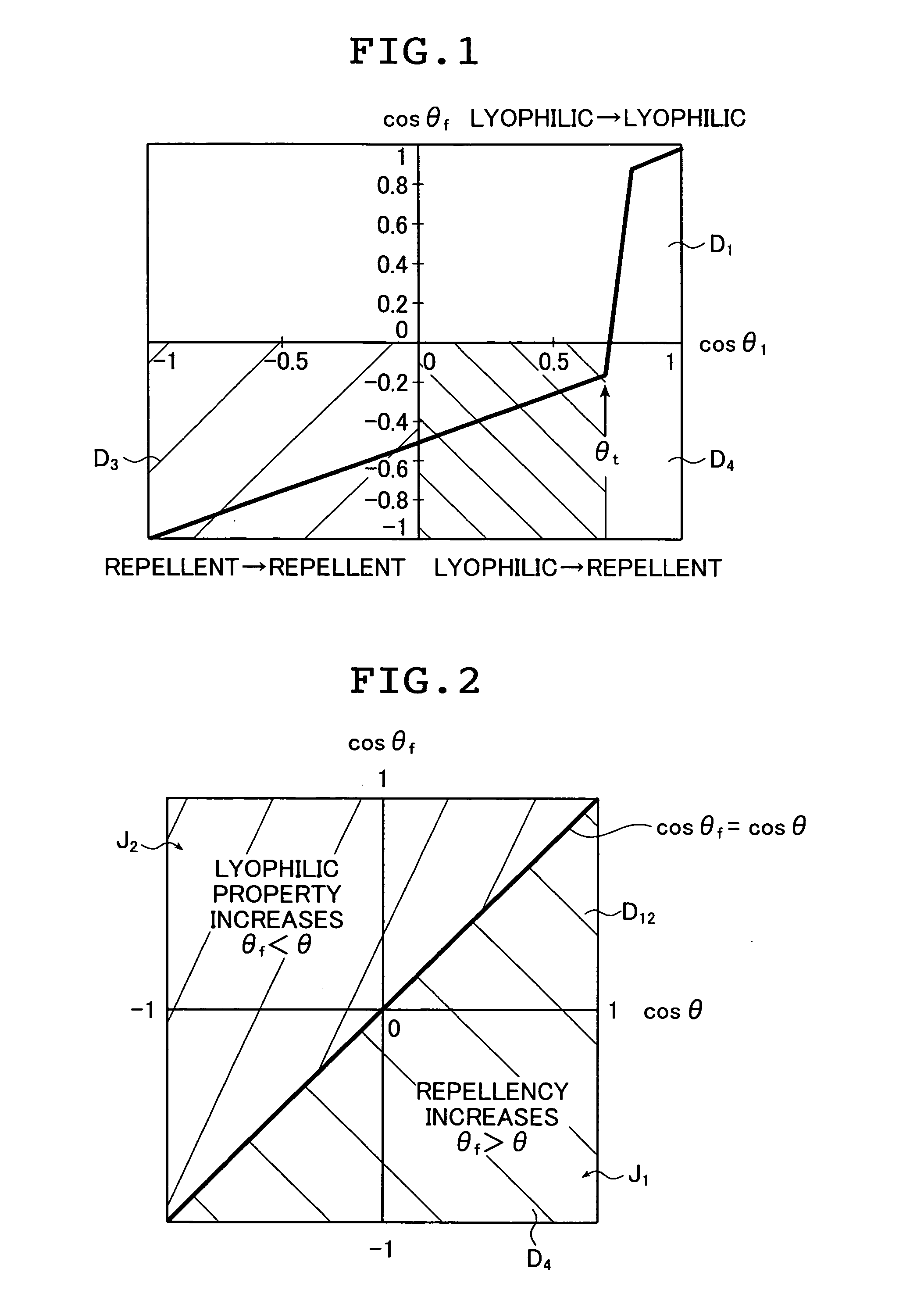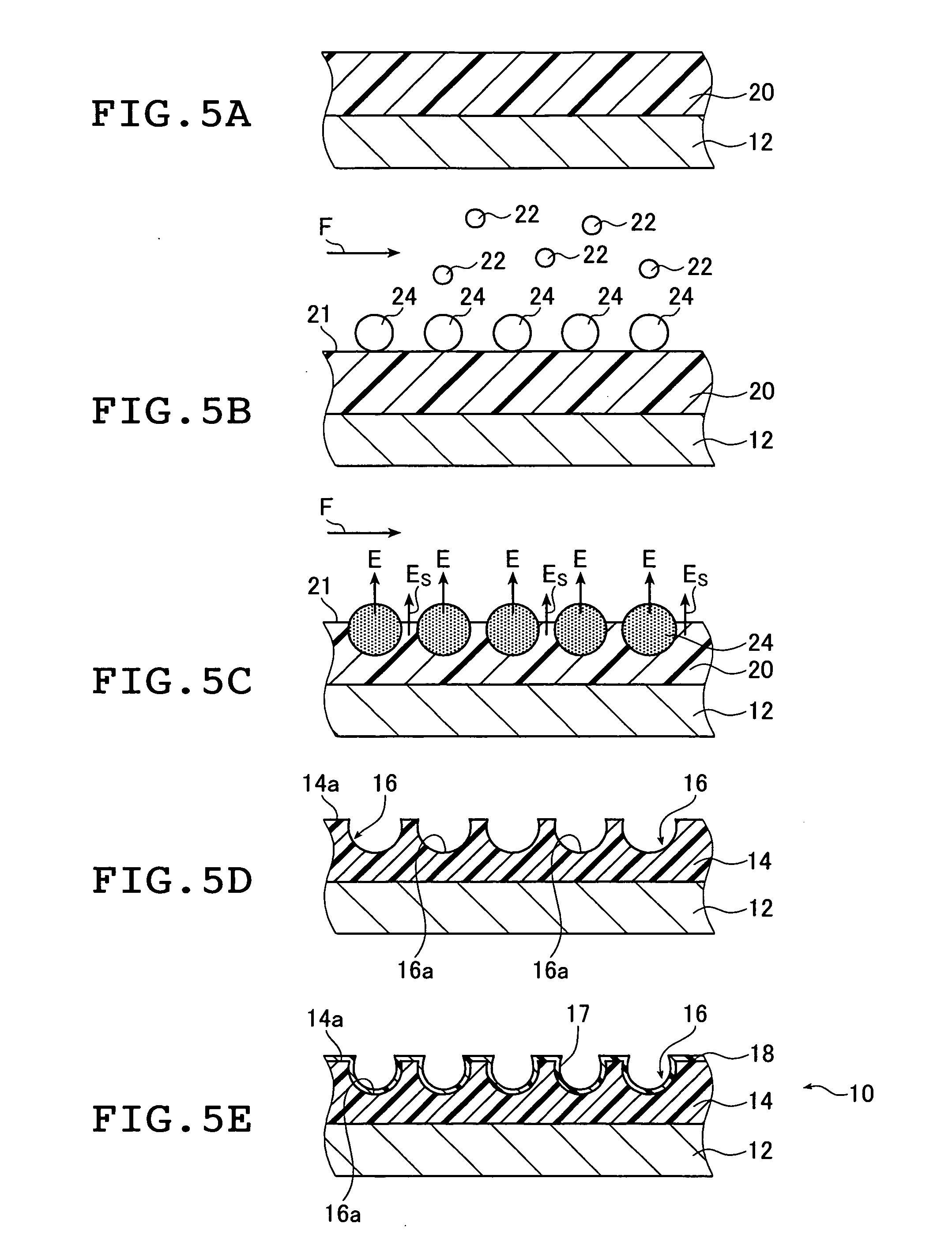Liquid repellent structure, method of producing the same, liquid ejection head and protective film
a technology of liquid repellent and protective film, which is applied in the field of liquid repellent structure, can solve the problems of high abrasion resistance, high cost of water repellent production, and high production cost, and achieve high abrasion resistance, high repellency, and easy production.
- Summary
- Abstract
- Description
- Claims
- Application Information
AI Technical Summary
Benefits of technology
Problems solved by technology
Method used
Image
Examples
example 1
[0309] In Example 1, honeycomb-patterned films (repellency increasing structures) of Example Nos. 1 and 2 to be described below were produced and evaluated for their repellency.
[0310] Poly(ε-caprolactone) was used to form the honeycomb-patterned film in Example No. 1 as shown in FIGS. 10D and 11A.
[0311] The honeycomb-patterned film in Example No. 1 was further subjected to oxygen plasma etching and fluorocarbon coating with a fluoroalkylsilane to form the repellency increasing structure in Example No. 2 as shown in FIGS. 9 and 11B.
[0312] In Example 1, oxygen plasma etching was performed to thin the lateral walls between adjacent recesses thus enlarging the recesses as shown in FIGS. 11A and 11B.
example 2
[0318] Next, Example 2 of the present invention will be described.
[0319] Various liquids having different surface tensions (water, an aqueous IPA solution having a concentration of 0.5 to 30 wt %, hexadecane, decane, heptane, octane, silicone oil, and a mixed liquid for the wetting tension test (manufactured by Wako Pure Chemical Industries, Ltd.) were used to measure the contact angles in Example Nos. 1 and 2 and Comparative Example Nos. 1 and 2 of Example 1 described above to thereby examine the effect of the surface structure of the present invention. The results are shown in FIGS. 16A and 16B.
[0320]FIG. 16A is a graph showing a relationship between the contact angle on a flat surface in Comparative Example No. 1 and that on the honeycomb structure in Example No. 1 and FIG. 16B is a graph showing a relationship between the contact angle on a flat surface in Comparative Example No. 2 and that on the honeycomb structure in Example No. 2.
[0321] As shown in FIG. 16A, a polygonal l...
PUM
| Property | Measurement | Unit |
|---|---|---|
| contact angle | aaaaa | aaaaa |
| contact angle | aaaaa | aaaaa |
| thickness | aaaaa | aaaaa |
Abstract
Description
Claims
Application Information
 Login to View More
Login to View More - R&D
- Intellectual Property
- Life Sciences
- Materials
- Tech Scout
- Unparalleled Data Quality
- Higher Quality Content
- 60% Fewer Hallucinations
Browse by: Latest US Patents, China's latest patents, Technical Efficacy Thesaurus, Application Domain, Technology Topic, Popular Technical Reports.
© 2025 PatSnap. All rights reserved.Legal|Privacy policy|Modern Slavery Act Transparency Statement|Sitemap|About US| Contact US: help@patsnap.com



